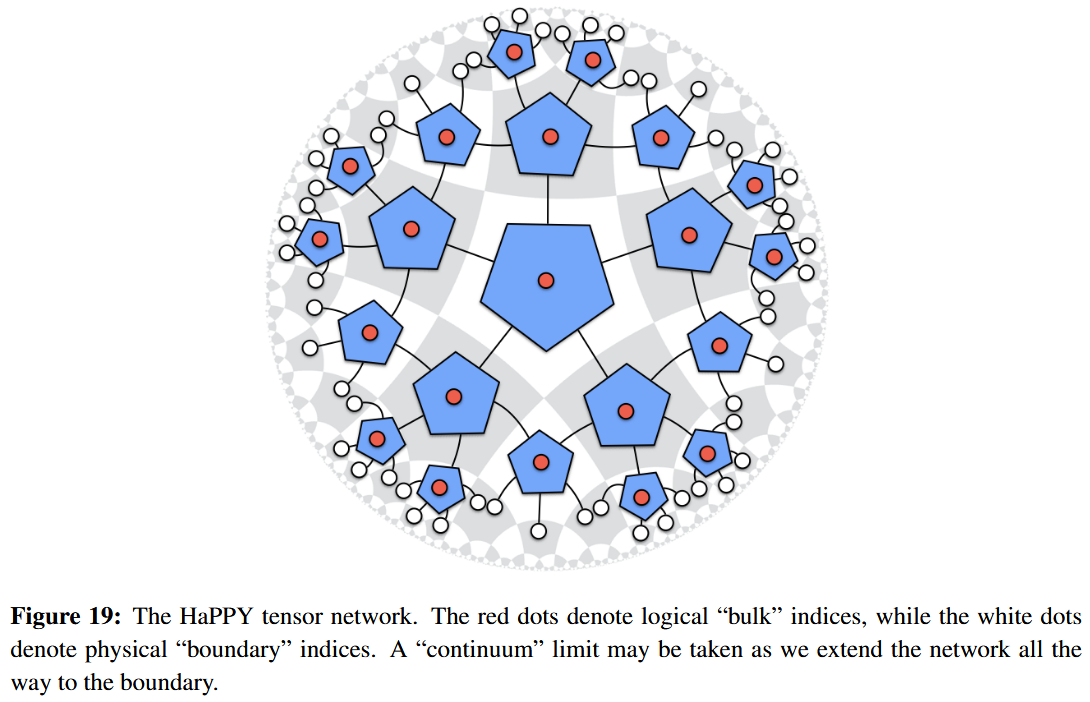nLab HaPPY code
Context
Quantum systems
-
quantum algorithms:
Contents
Idea
The hyperbolic pentagon code or HaPPY code is a quantum error correction code (a class of such codes really, indexed by a “cutoff” natural number) which is thought to exhibit characteristic properties akin to the encoding of bulk-quantum states by boundary-states expected in the AdS/CFT correspondence. In particular, the HaPPY code (or rather the tensor network that defines it) exhibits a discretized form of the Ryu-Takayanagi formula for holographic entanglement entropy.
Concretely, the the HaPPY code subspace is the image of the linear map formed by:

-
picking a perfect tensor of rank 6;
-
picking a finite cutoff of the pentagonal tesselation of the hyperbolic plane;
-
regarding its Poincaré dual graph as a tensor network (string diagram in finite-dimensional vector spaces) by
and thus as a linear map form the tensor product over the bulk-vertices to the tensor product over the edges sticking out over the boundary.
Related concepts
References
Tha HaPPY code is due to
- Fernando Pastawski, Beni Yoshida, Daniel Harlow, John Preskill, Holographic quantum error-correcting codes: Toy models for the bulk/boundary correspondence, JHEP 06 (2015) 149 (arXiv:1503.06237)
following a precursor observation in
- Ahmed Almheiri, Xi Dong, Daniel Harlow, Bulk Locality and Quantum Error Correction in AdS/CFT, JHEP 1504:163,2015 (arXiv:1411.7041)
Review in:
- Daniel Harlow, TASI Lectures on the Emergence of Bulk Physics in AdS/CFT (arXiv:1802.01040)
See also:
- Elliott Gesteau, Monica Jinwoo Kang, The infinite-dimensional HaPPY code: entanglement wedge reconstruction and dynamics (arXiv:2005.05971)
Variation to be more truthful to AdS/CFT:
- Rafał Bistroń, Mykhailo Hontarenko, Karol Życzkowski: Bulk-boundary correspondence from hyper-invariant tensor networks [arXiv:2409.02029]
Last revised on September 4, 2024 at 06:21:02. See the history of this page for a list of all contributions to it.